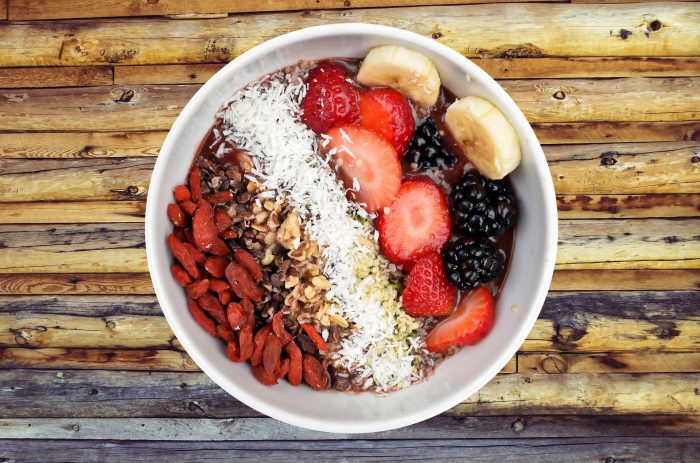The microbiome affects our immune system responses
By David Dunaief, M.D.

We have been hearing more frequent references to the microbiome recently in health discussions and healthcare marketing. So, what is it, and why is it important to our health?
We each have a microbiome, trillions of microbes that include bacteria, viruses and single-cell eukaryotes that influence our body’s functions. When “good” and “bad” microbes are in balance, we operate without problems. However, when the balance is tipped, often by environmental factors, such as diet, infectious diseases, and antibiotic use, it can make us more susceptible to inflammation, diseases and disorders.
We are going to focus on the gut microbiome, where much of our immune system response lives. Research into the specifics of our microbiome’s role in healthy functioning is still in its infancy. Current research into the microbiome’s effects include its role in obesity, diabetes, irritable bowel syndrome, autoimmune diseases, such as rheumatoid arthritis and Crohn’s, and infectious diseases, such as colitis.
What affects our microbiome?
Lifestyle choices, like diet, can impact your microbiome positively or negatively. Microbiome diversity may vary significantly in different geographic locations throughout the world, because diet and other environmental factors play such a large role.
When we take medications, like antibiotics, we can wipe out our microbial diversity, at least in the short term. This is why antibiotics can cause gastrointestinal upset. Antibiotics don’t differentiate between good and bad bacteria.
One way to counteract an antibiotic’s negative effects is to take a probiotic during and after your course of antibiotics. I recommend taking Renew Life’s 30-50 billion units once a day, two hours after an antibiotic dose and continuing for 14 days after you have finished taking your prescription. If you need more protection, you can take one dose of probiotics two hours after each antibiotic dose.
Does the microbiome affect weight?
Many obese patients continually struggle to lose weight. Obese and overweight patients now outnumber malnourished individuals worldwide (1).
For a long time, the weight loss “solution” had been to reduce caloric intake. However, extreme low-calorie diets were not having a long-term impact. It turns out that our gut microbiome may play important roles in obesity and weight loss, determining whether we gain or lose weight.
The results from a study involving human twins and mice are fascinating (2). In each pair of human twins, one was obese, and the other was lean. Gut bacteria from obese twins was transplanted into thin mice. The result: the thin mice became obese. However, when the lean human twins’ gut bacteria were transplanted to thin mice, the mice remained thin.
By pairing sets of human twins, one obese and one thin in each set, with mice that were identical to each other and raised in a sterile setting, researchers limited the confounding effects of environment and genetics on weight.
The most intriguing part of the study compared the effects of diet and gut bacteria. When the mice who had received gut transplants from obese twins were provided gut bacteria from thin twins and given fruit- and vegetable-rich, low-fat diet tablets, they lost significant weight. Interestingly, they only lost weight when on a good diet. The authors believe this suggests that an effective diet may alter the microbiome of obese patients, helping them lose weight. These are exciting, but preliminary, results. It is not yet clear which bacteria may be contributing to these effects.
Gut bacteria and autoimmune disease
Rheumatoid arthritis (RA) is an autoimmune disease that can be disabling, with patients typically suffering from significant joint soreness and joint breakdown. What if gut bacteria influences RA risk? In a study, the gut bacteria in mice that were made susceptible to RA by deletion of certain genes (HLA-DR genes) were compared to those who were more resistant to developing RA (3). Researchers found that the RA-susceptible mice had a predominance of Clostridium bacteria and that those resistant to RA were dominated by bacteria such as bifidobacteria and Porphyromonadaceae species. The significance is that the bacteria in the RA-resistant mice are known for their anti-inflammatory effects.
Diet and other lifestyle considerations, such as eating and sleeping patterns or their disruptions, can affect the composition and diversity of gut bacteria (4). Studies have already demonstrated prebiotic effects of fiber and significant short-term changes to the microbiome when eating fruits, vegetables, and plant fiber. Others are considering the effects of specific diets on the immune system and development of non-communicable diseases (5).
The promise of personalized medicine that helps individuals identify the perfect mix of microbes for them is still out in the future; however, many preliminary studies suggest important learnings that we can all use.
References:
(1) “The Evolution of Obesity”; Johns Hopkins University Press; 2009. (2) Science. 2013;341:1241214. (3) PLoS One. 2012;7:e36095. (4) Nutrients. 2019 Dec;11(12):2862. (5) Nutrients. 2021 Feb 22;13(2):699.
Dr. David Dunaief is a speaker, author and local lifestyle medicine physician focusing on the integration of medicine, nutrition, fitness and stress management. For further information, visit www.medicalcompassmd.com or consult your personal physician.
















